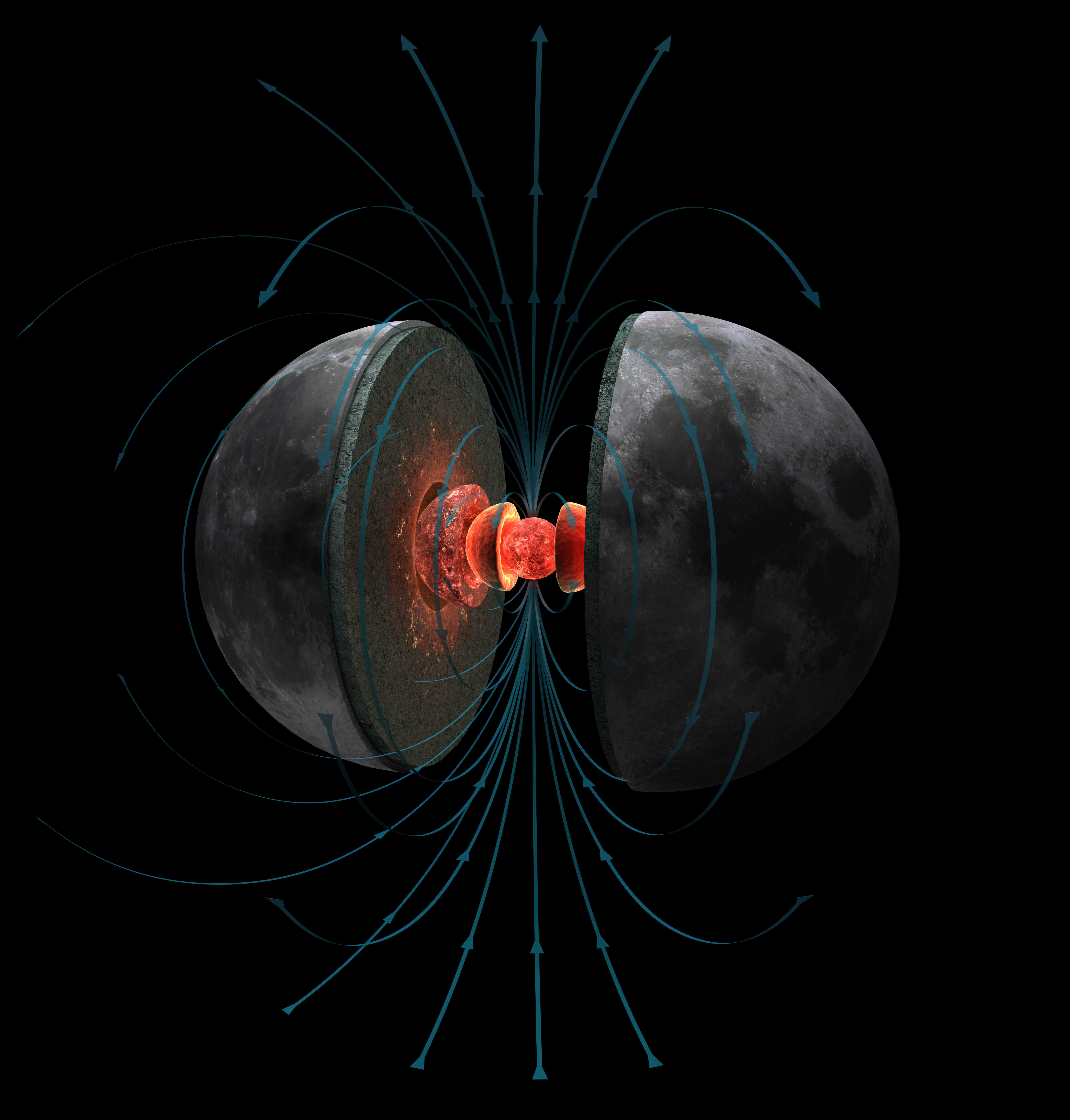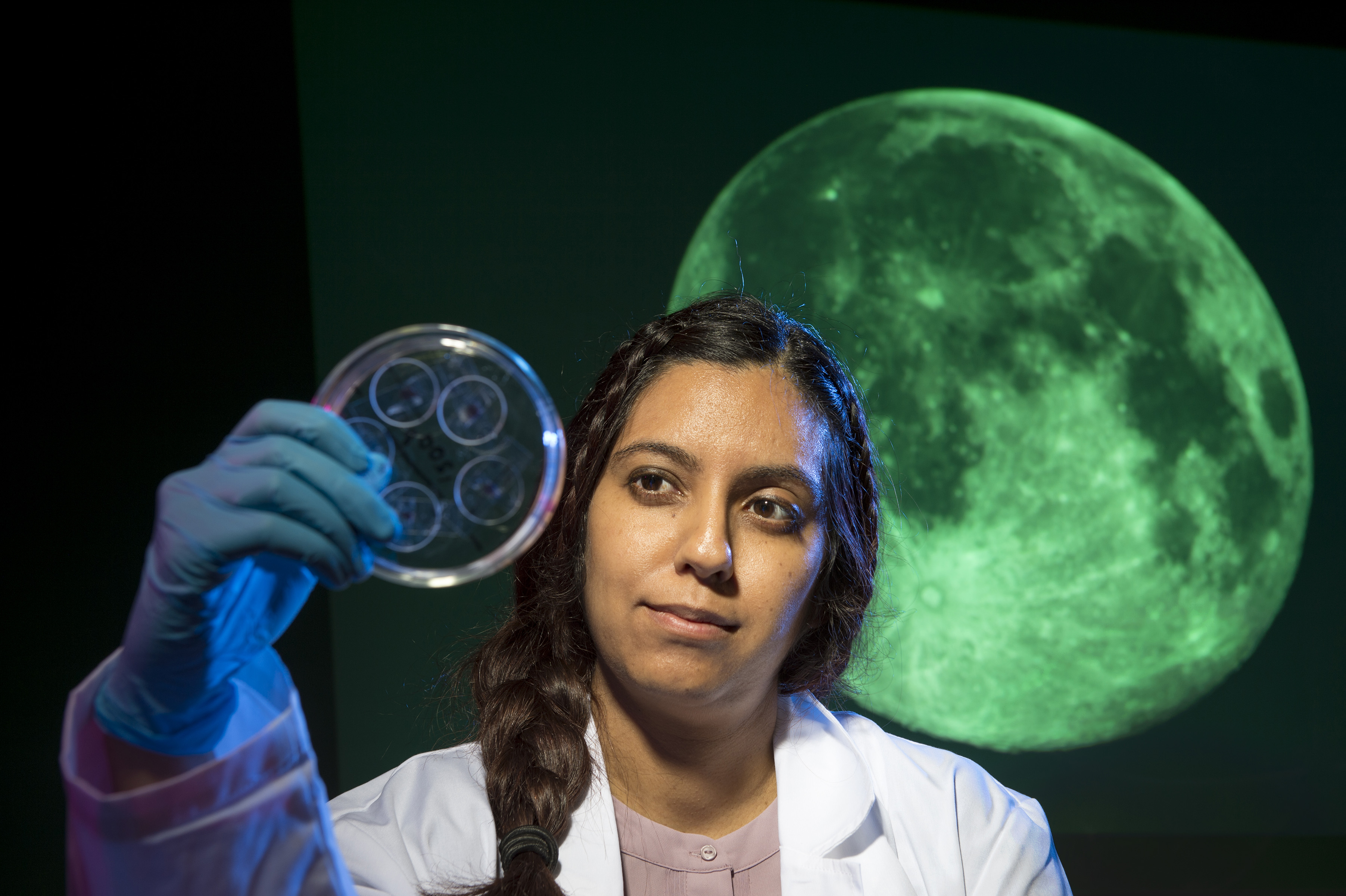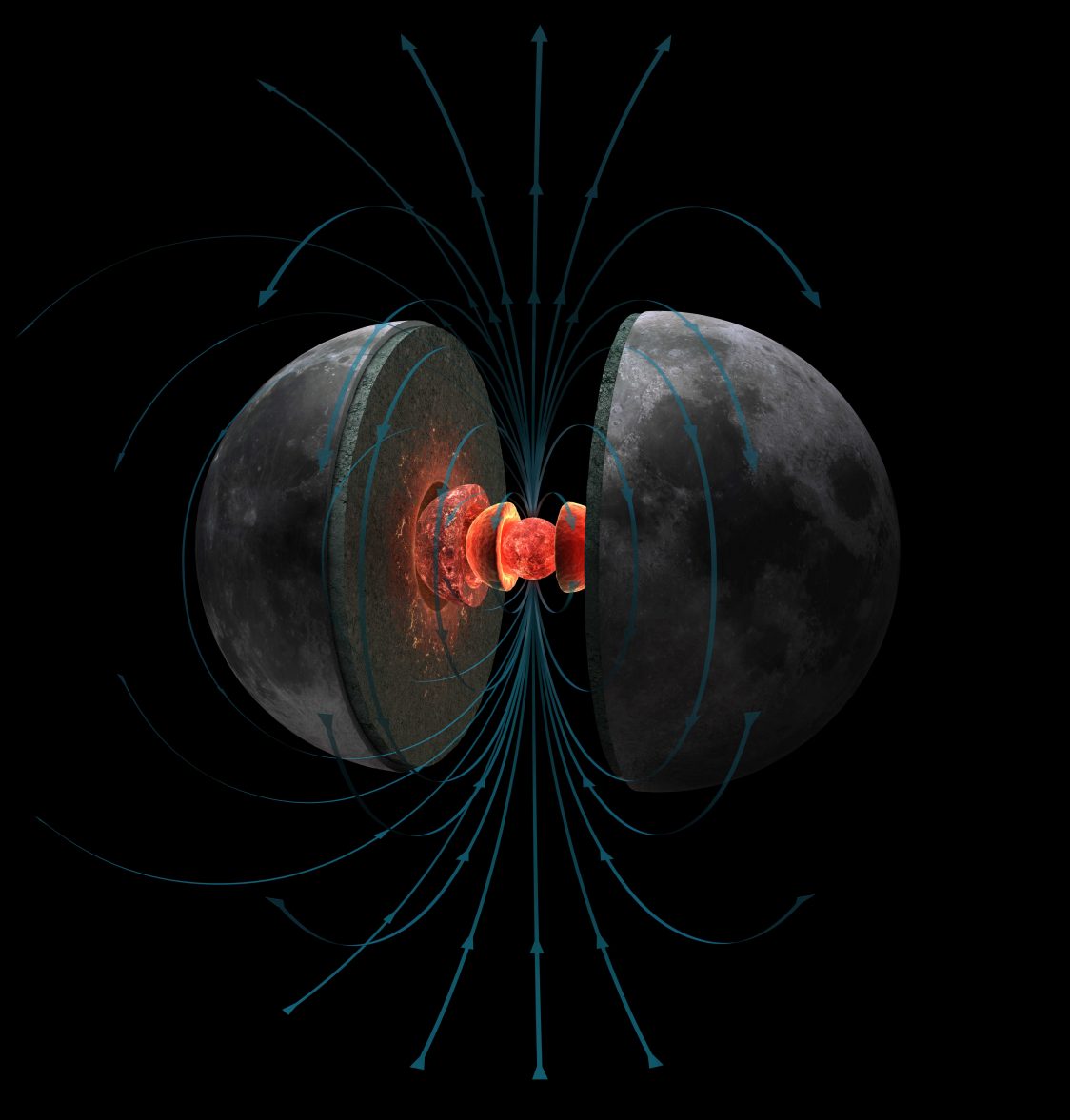By Ken Kurtulik
Sonia Tikoo, an assistant professor of Earth and Planetary Sciences and member of the Rutgers Institute for Earth, Ocean, and Atmospheric Sciences (EOAS), is receiving the Doris Curtis Outstanding Woman in Science award from the Geological Society of America for her research into lunar magnetism.
The research endeavored to establish the strength, duration, and power-source of the Moon’s ancient magnetic field, which lasted from 4.25 billion years ago to at least 2.5 billion years ago. Core crystallization and precession were suggested as possible sources for the strong and long-lived magnetic field.
Sonia Tikoo grew up in Cape Girardeau, Missouri. Her father, a math professor, and mother, a former economics teacher, enjoyed watching sci-fi shows like Star Trek while she was growing up. Young Sonia was naturally attracted to reading books about the planets and watching space shuttle launches.
“I was really into this concept of exploring other worlds. I knew that there weren’t aliens out there but the idea of exploring other planets and learning about them really appealed to me,” Tikoo said. Early cultural influences included books by Isaac Asimov, and TV shows like Star Trek Voyager, thanks in part to its strong female captain.

Illustration of the Moon’s magnetic field.
Image credit: Hernan Canellas / MIT Paleomagnetism Laboratory.
One of her favorite books growing up was Carl Sagan’s “Contact.” In it, the female protagonist, Ellie, earned a Ph.D. from the California Institute of Technology. Tikoo even got to visit the school for a conference with her father when she was about 14 years old. As Tikoo grew up, she knew she wanted to study at a university that offered opportunities in science and technology. When the time came to enroll, she had several choices but couldn’t turn down the opportunity to study at Caltech.
Tikoo started at Caltech majoring in aerospace engineering thinking it was her ticket to space science. Her interests changed over the course of her freshman year, though. Tikoo watched a group of young women in her dorm travel the world with the geology program, spending weeks at a time in exotic places like China, Australia, and South Africa.
“It was cool to see that cohort of women doing really cool things, and I wanted to be a part of that,” Tikoo said. In time, she realized that majoring in geology would allow her to explore space through rocks.
After her freshman year, she secured an internship at NASA’s Jet Propulsion Laboratory. There, she helped design devices that could identify biomarkers in Martian soil. It was an eye-opening experience that brought her to realize she was more interested in chemistry and geology than engineering.
Tikoo became a geology major that Fall before ever taking a geology course. Professor Joe Kirschvink affirmed her decision in his introductory Earth history class. Tikoo recalled being captivated by the idea of “snowball Earth.” She worked in Kirschvink’s laboratory every summer thereafter.
Still searching for an avenue into space science, Robert Kopp, now director of EOAS and then a teaching assistant for the same class, suggested Tikoo contact Ben Weiss at the Massachusetts Institute of Technology. Weiss was researching extraterrestrial paleomagnetism. Tikoo began her research into lunar magnetism and eventually completed her doctorate there.
Paleomagnetism is the study of ancient magnetism preserved in rocks, Tikoo said. Igneous rocks can acquire magnetism as they cool in the presences of the Earth’s magnetic field. Sedimentary rocks can also acquire magnetization during their formation. On Earth, paleomagnetism has been used to determine continental drift, among other applications. On foreign planetary bodies, evidence of rocks affected by magnetism indicates the planet had an active dynamo, or convective core, at some point. A dynamo is caused by the rise of hot metals and the fall of cold metals inside a planet’s core. The cyclical motion of these molten metals generates a magnetic field.
Tikoo has studied lunar magnetism for several years. The Moon is an interesting body to study because of its intermediate size, she said. Large bodies like the Earth and Mercury still have active dynamos while dynamos in small bodies like asteroids likely went extinct in the early solar system.
Tikoo was recently lead author on a research paper that sought to understand why the Moon had such a strong, long-lasting magnetic field. The Moon’s magnetic field would only have persisted for around 500 million years if it were powered by nothing more than core convection. At its strongest, some 3.56 to 3.85 billion years ago, the Moon’s magnetic field was as strong as the Earth’s is today, she said.

Photo: Nick Romanenko/Rutgers University
Sonia Tikoo, an assistant professor in Rutgers-New Brunswick’s Department of Earth and Planetary Sciences, looks at moon rock samples in a Petri dish.
Core crystallization could explain the longevity of the Moon’s dynamo, Tikoo said. Chemical buoyancy and latent heat released in the cooling core could have prolonged the dynamo’s life. Chemical buoyancy energized the dynamo by forcing all the lighter metals to rise. At the same time, the denser, cooling iron sank and solidified. This solidification produced latent heat energy that further energized the lighter, more buoyant metals in the outer core.
Lunar precession could explain the high intensity of the Moon’s magnetic field, Tikoo said. Lunar precession is the idea that Earth’s gravity pulled on the Moon’s mantle in a way that caused it to spin on a slightly different axis than its molten core. The process is like rotating a glass of water; rotating the glass has a small influence over the rotation of the water. The difference is that on the Moon, the rotational differential mechanically churned the molten core, thus energizing fluid motion and strengthening the Moon’s magnetic field.
Tikoo has continued her research into lunar magnetism at Rutgers. Moving to Rutgers was an easy decision due to its sample-based research and its long history studying paleomagnetism.
“We have a really good commitment to experimental geoscience in this department,” Tikoo said. Rutgers Earth and Planetary Sciences department is a great place to collaborate with first-class scientists and offers great support, she added.
Recognizing her research into lunar magnetism, the Geological Society of America is presenting Tikoo with the Doris Curtis Outstanding Woman in Science award Oct. 22. The award recognizes women who greatly impact the geosciences field with their doctorate research.
“There are so many young women doing exceptional science. It was incredible to be recognized among such an awesome cohort,” Tikoo said. It is exciting to see the award go toward a planetary science project, she added.
Tikoo was grateful to her many mentors over the years. Advisors and colleagues from every stage of her career stepped forward to help nominate her. Ben Weiss, her Ph.D. advisor, was the colleague that got her started on research into lunar magnetism. Joe Kirschvink, her undergrad advisor, was the passionate professor that first inspired Tikoo with big ideas about Earth history. Nick Swanson-Hysell, her post-doctorate advisor, helped further her research at U.C. Berkeley. And Dennis Kent, a Rutgers colleague, helped build the paleomagnetism laboratory on campus into the first-rate collaborative environment it is today.
It was no easy task getting to this point, though. There are sometimes small interactions that, in aggregate, work to alienate women in science, Tikoo said. For example, having a beer with a male professor after getting out of the lab may carry a very different connotation for a female student. These impromptu events might seem innocuous, but they can lead to opportunities that women may miss out on in male-dominated environments.
It is critically important for women in science to network and form support groups, Tikoo said. Though all of Tikoo’s advisors were male, she was always able to find a female faculty member in geoscience that could help her make career decisions. Seeking advice from these women on how to handle career opportunities and work-life balance was invaluable.
Female role models are extremely important to the success of young women in STEM, Tikoo said. One of the things that encouraged Tikoo through her studies was seeing the success of female professors. Role models only became more important as her studies progressed, too. The ranks of her female peers seemed to thin as Tikoo moved up to the doctorate, then post-doctorate level.
“I think it’s extremely important to have women in faculty level positions because just that mere example of them existing is very powerful to a young student,” Tikoo said.
The award-winning professor can be found on campus teaching the Geology of Moons and Planets (01:460:224), working with the EOAS planetary habitability committee, or, of course, working with graduate students in her lab.



